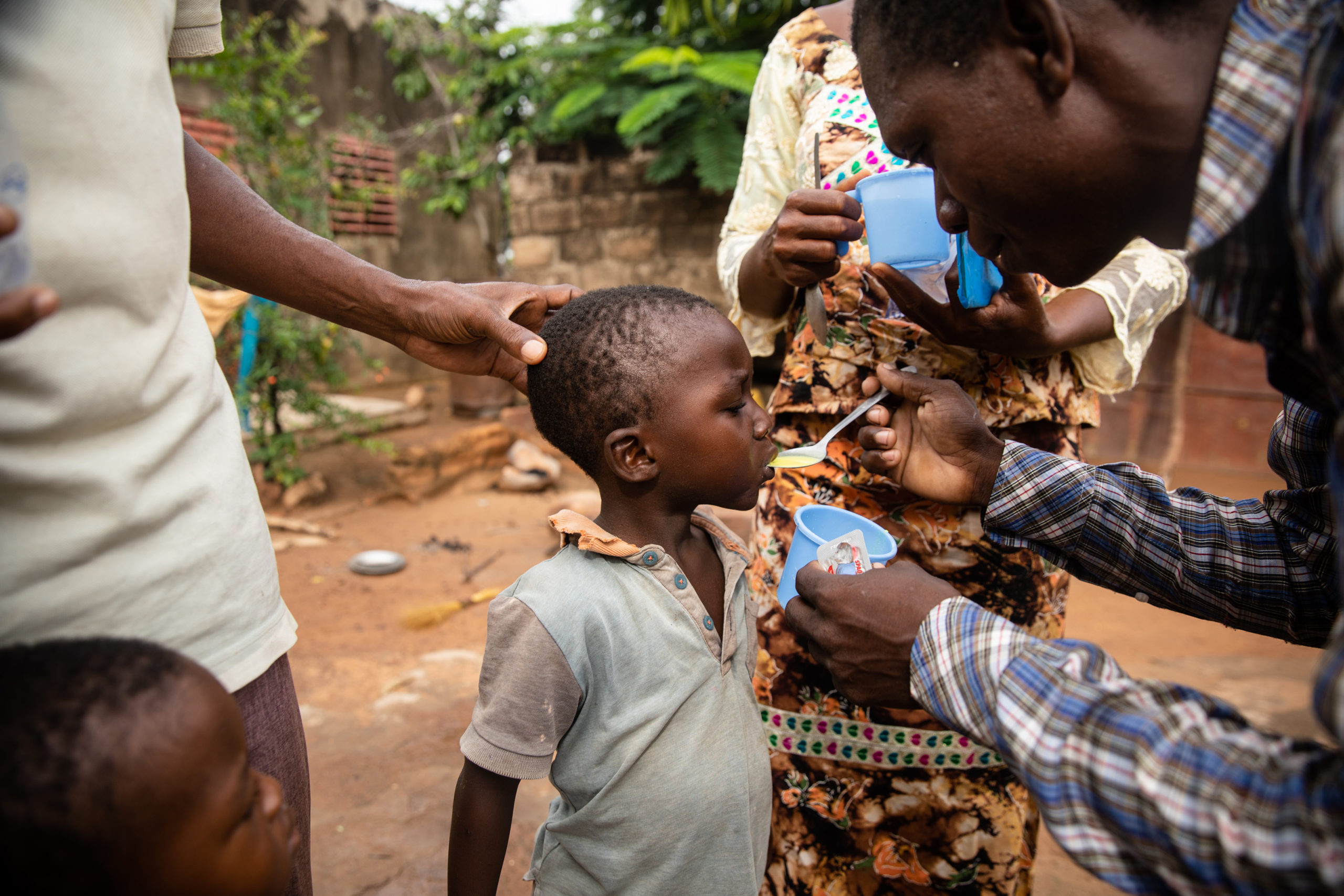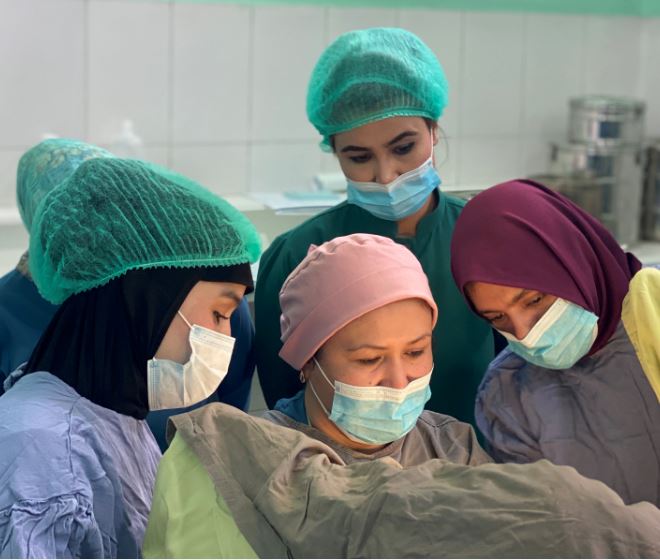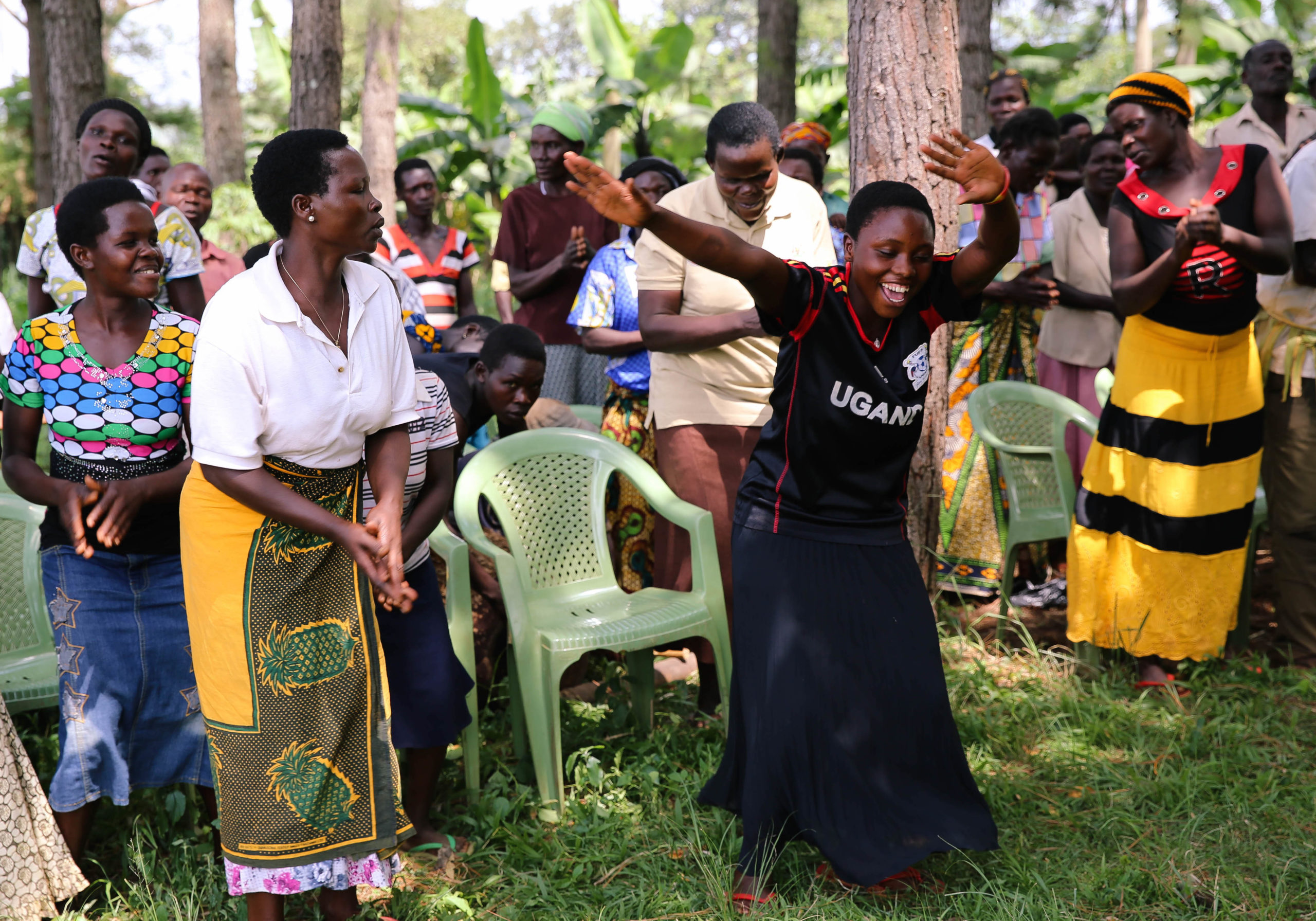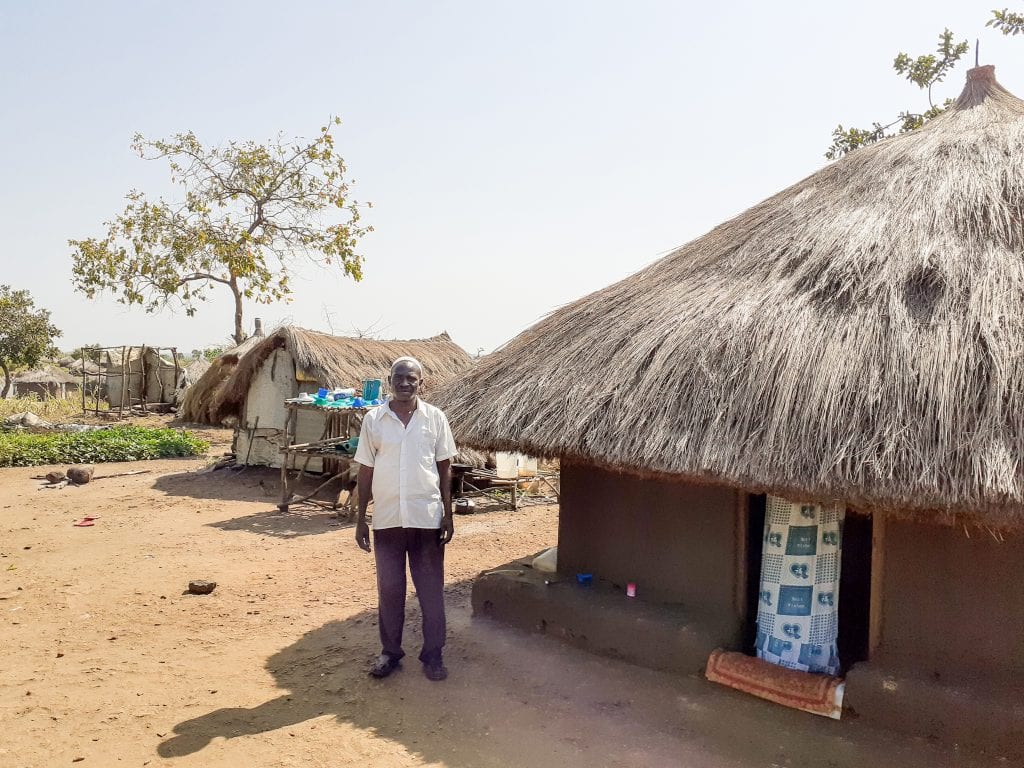by Ashley Giles, Senior Communications Officer at Malaria Consortium and Matthieu Baudry, Supply Chain Coordinator at Malaria Consortium
The moment a community distributor gives a cup of life-saving malaria medicine to each of six million children across the Sahel region this year, it marks the finish line of a long and winding road from manufacturer to community. 
Since 2013, Malaria Consortium has overseen the transportation and distribution of drugs for seasonal malaria chemoprevention (SMC), aWHO-recommended intervention in areas where malaria transmission peaks during the rainy season. SMC is designed to distribute safe and effective antimalarial medication in four monthly intervals during the rainy season to those most at risk: children under five. This involves giving a combination of two drugs, sulfadoxine-pyrimethamine (SP) and amodiaquine (AQ). The aim is to maintain sufficient levels of antimalarial drugs in children’s bloodstreams throughout the rainy season.
So how do the drugs reach the children who need them? Our operations team oversees this process; from calculating the numbers of drugs needed to overseeing their distribution to the health facilities in Burkina Faso, Nigeria and Chad. From there, the drugs are dispensed with the support of the programme team. Preparations for the campaign involves six steps, from ordering the drugs to passing them to distributors.
Step one: Ordering and manufacturing the drugs 
The drugs required are in high demand globally and there is only one manufacturer that is pre-approved by the World Health Organization (WHO) to produce them. When this factor is added to the number of blister strips of drugs needed for our campaign – around 27 million – there is no alternative: we must order the drugs we need at least one year before the distribution campaign begins. Each blister strip contains one tablet of SP and three tablets of AQ.
Once the drugs have been produced, the baton is passed to the international couriers for the next stage of the process.
Step two: transporting the drugs across oceans and continents
From the factory near Guilin in China, the SMC drugs begin a journey of over 12,000km, passing overland to the port in Shanghai, crossing the Indian Ocean to reach the African continent. Following good distribution practice, the drugs are transported in refrigerated containers to keep them at optimum temperature and humidity, thus ensuring drug quality while in transit. Data loggers in the containers provide updates on temperature and humidity whenever a ship comes close to land, as well as at the destination port. It is important for drugs to remain in the same container for as long as possible to maintain quality.
Step three: The drugs arrive in the Sahel 
Malaria Consortium’s Logistics Managers can track all shipments via a tracker dashboard before the drugs arrive at seaports and airports in Lagos (Nigeria), Douala (Cameroon) and Lome (Togo). Once the shipments arrive at the ports, the longest stretch of the drugs’ journey is complete, but there are still several hurdles to overcome. For Burkina Faso and Chad, freight is transported overland to N’Djamena and Ouagadougou, dealing with border crossings en route. The operations team in each country is then responsible for ensuring the drugs move through customs and on to the respective central medical stores.
Step four: Quality control
Central medical stores hold the drugs for quality control and testing. At this stage, Malaria Consortium’s operations team carries out a stock reconciliation to ensure the correct quantity of drugs has been received at the stores, and that the quality seals on the packaging are inspected. In Burkina Faso and Chad specifically, the drugs are quarantined and checked by authorities. For Nigeria, the drugs control authority inspects the shipments before departure in China to ensure the drugs are legitimate and the correct licences are held by the recipients.
Once this process is complete, the drugs can be sent to local laboratories, where samples are tested to ensure their quality after the long journey. Only once these tests are completed are the drugs cleared to continue their journey.
Step five: From the store to the districts
The local operations team’s final task in each country is to ensure the drugs reach the states or districts where SMC is implemented. The teams work to ensure the correct quantity of drugs reaches each district. Once the drugs are in the area where they are due to be distributed from, they are put into storage for one to three months ahead of the campaign starting. This also gives the team the chance to do final stock reconciliation and repackage all the drugs per health facility requirements for each cycle – which can take days, as some states can be dealing with 400,000 blister strips per cycle. After this, the responsibility for the drugs is handed over to Malaria Consortium’s programme team and nearly 55,000 community distributors, who take over the baton from there.
Step six: Treating six million children 
Distribution of the SMC drugs takes place door-to-door across Burkina Faso, Chad and Nigeria from July to October to coincide with the rainy season. Alongside the logistical efforts to ensure the drugs are available in time for the beginning of the distribution campaigns, Malaria Consortium has also been helping to train community distributors and their supervisors to dispense drugs to eligible children and to ensure that the treatments are given according to guidelines.
The SMC campaign is delivered in each country in four monthly intervals over a period of four days per interval or ‘cycle’. A few days before each cycle a huge exercise is undertaken by the operations team and the local Ministry of Health stock managers to move the repackaged drugs to over 3,000 health facilities across the three countries. At the start of each cycle, the child’s caregiver receives a blister strip of the SMC drugs from the community distributors, and the first doses of SP and AQ are taken when the distributor is present, so they can learn how to administer the drugs. The caregiver then gives the child the two remaining doses of AQ over the next two days. Malaria Consortium has worked with the manufacturer to create a tablet that dissolves in water and is sweetened to be more acceptable to the child.
In 2019, Malaria Consortium reached almost six million children with SMC. All 27 million blister packs of drugs completed their journey from Guilin via a multitude of customs and quality checks, and transit through each country, to bloodstreams of the children most vulnerable to malaria infection. The organisation is aiming to reach 12 million children with SMC in 2020.
Learn more about Malaria Consortium’s seasonal malaria chemoprevention programme here.






